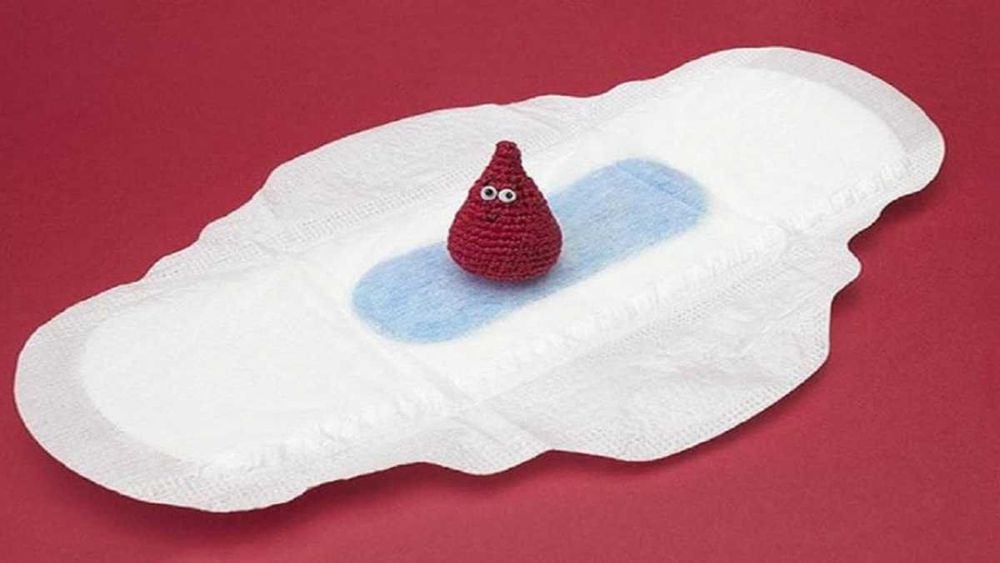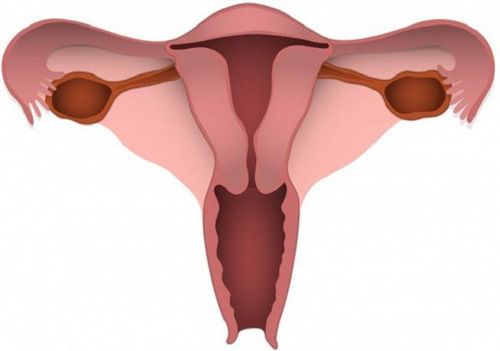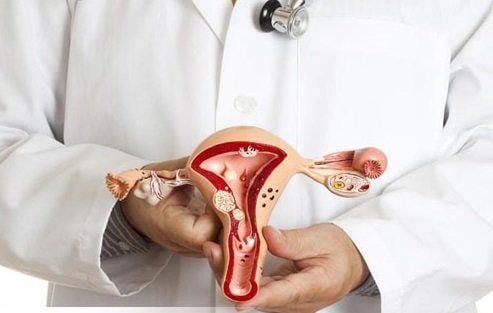This is an automatically translated article.
The article is professionally consulted by Master, Doctor Le Nhat Nguyen - Department of Obstetrics and Gynecology - Vinmec Da Nang International HospitalYour body goes through a lot of changes during pregnancy. And those changes don't necessarily stop after you've given birth. Your body needs time to recover, so some symptoms persist for a few days or even weeks after giving birth. One of those symptoms is postpartum bleeding.
1. Why do I bleed a lot after giving birth?
The blood you see after giving birth is called lochia. It's a discharge similar to your period and usually lasts for four to six weeks after giving birth. The discharge usually contains:
Blood Pieces of the lining of the uterus Mucus White blood cells Like periods, this bleeding is caused by the shedding and healing of the uterine lining. At first, the discharge was mainly blood. After a few days, you will probably see more mucus than blood.
Normal postpartum bleeding
For the first one to three days after giving birth, the blood you see may be bright red or dark red. It may smell like the blood you normally bleed during your period. There can also be a few blood clots, ranging from the size of a grape to the size of a dried plum.
From day 4 to day 7, the blood will turn pinkish or brownish. The clots will get smaller or disappear.
By the end of the first week, the discharge will likely be white or yellow. In three to six weeks, the discharge should stop.
Bleeding after a cesarean section
If you had a cesarean section (cesarean section), you may have less discharge than you would with a vaginal delivery after delivery. However, you will probably see some blood for a few weeks. The color of the blood will change from red to brown or yellow or the same as you see after vaginal delivery.

2. What is normal and abnormal postpartum bleeding?
Normal discharge
Your blood will be bright red and you may see some blood clots for the first few days after giving birth. At first, you'll need to wear hospital-provided adult diapers or tampons. But you should be able to go back to regular tampons afterwards.
You may bleed a little more when you get home. This may be because you are moving a lot. If this happens, try to stay still and rest a bit.
It's normal to feel some blood while standing sometimes. This is because of the shape of the vagina, and blood collects in the cup-like area when you are sitting or lying down. When you stand, it will flow backwards.
After about 10 days, you will see less bleeding. You may experience light bleeding or spotting for up to 6 weeks after giving birth. You can only use tampons during this time and not use tampons, as these can lead to infection.
Abnormal discharge
Heavy bleeding after delivery is called postpartum haemorrhage , which occurs in approx. 5% of women give birth. This is more likely to happen in the first 24 hours after giving birth. But it can happen anytime within the first 12 weeks after you give birth.
Postpartum haemorrhage is very dangerous. It can lower your blood pressure. If your blood pressure is too low, your organs won't receive enough blood to nourish and keep working. This is a shock and it can be fatal. That is why, you need to go to a medical facility immediately if you see any of the following signs:
Bright red bleeding after the third day after giving birth The clot is bigger than a plum The bleeding is more penetrating one tampon/hour and doesn't slow down or stop Blurred vision Chills Cold sweaty skin Heart palpitations Dizziness Fatigue Nausea Feeling faint

3. What causes abnormal bleeding after giving birth?
Several factors can increase the risk of postpartum hemorrhage. You are at higher risk if you have had it in a previous birth. For reasons unknown, Asian and Hispanic women are more likely to have heavy postpartum bleeding than women from other countries.
The most common cause of postpartum bleeding is uterine atony. Normally, the uterus contracts after birth to stop bleeding where the placenta has shed from the uterine wall. The placenta is an organ that develops in the uterus during pregnancy and nourishes your baby. In the case of uterine atony, the uterus does not contract as well as it should and this can cause heavy bleeding after delivery.
You are more likely to have heavy postpartum bleeding if you:
Give birth to multiple babies (for example, twins) Give birth to a baby larger than 8 pounds 13 ounces Long or too fast labor Have given birth a few times in the past the membranes have been infected Having other conditions that can increase the risk of postpartum hemorrhage, such as:
Uterine rupture - when the uterus is torn during labor C-section - risk higher chance of bleeding after cesarean section than vaginal delivery Vaginal or cervical tear during delivery General anesthesia - this may be used if you have a caesarean section Oxytocin (Pitocin) - a medicine that induces labor Pre-term eclampsia - high blood pressure and protein in the urine during pregnancy Obesity problems affecting the placenta Mother has a bleeding disorder that interferes with blood clotting Mother has an infection in the amniotic membrane that leads to infection uterus When part of the placenta remains in the uterus after delivery The uterus is exposed upside down

4. Diagnosis and treatment of postpartum bleeding
Diagnosis
The diagnosis of postpartum haemorrhage is based on close observation of the amount of bleeding. The vagina and perineum are examined to check for tears that may require further treatment. Doctors gently press on a woman's abdomen to feel the uterus and determine if the uterus is firm. A floppy uterus can mean that the uterus is not contracting as it should and blood is pooling inside the uterus.
Monitoring a woman's vital signs, such as blood pressure and heart rate, can help doctors determine if there is too much blood loss. A drop in blood pressure or a rapid heart rate may indicate excessive bleeding.
Treatment
If the bleeding is excessive, the mother's uterus will be massaged by pressing on the abdomen and the doctor will give oxytocin continuously through an intravenous line. These measures help the uterus to contract again. You are also given intravenous fluids to help restore the amount of fluid in your blood that has drained out. If bleeding continues, another medication that helps the uterus to contract is also used. These drugs can be injected into a muscle, placed as a tablet in the rectum, or during a cesarean section, injected into the uterus.
The doctor will look for the cause of the excessive bleeding. The uterus can be examined to see if any fragments of the placenta are left. Rarely dilatation and curettage are needed to remove these fragments. In this procedure, a small, sharp instrument (a curette) is passed through the cervix (which usually remains open after birth). A curettage is used to remove debris left in the uterus. This procedure requires anesthesia. The cervix and vagina will also be examined for lacerations.
If the uterus cannot be stimulated to contract and the bleeding continues, the arteries that supply blood to the uterus may have to be blocked to stop the bleeding. In this case, techniques that may be used include:
A balloon can be inserted into the uterus and inflated. Insertion of gauze into the uterine cavity The doctor may sew around the fundus of the uterus The procedures used usually do not cause infertility or menstrual irregularities or other lasting problems. Sometimes the arteries that supply blood to the uterus are blocked surgically or by inserting material through a catheter into the artery. Hysterectomy is rarely performed to stop bleeding.
Postpartum bleeding in the first few days after giving birth is usually quite a lot, However, if this condition persists, you need to contact your doctor for an examination.
Vinmec International General Hospital is one of the hospitals that not only ensures professional quality with a team of leading medical doctors, modern equipment and technology, but also stands out for its examination and consultation services. comprehensive and professional medical consultation and treatment; civilized, polite, safe and maximum sterilization space
If you need to consult and visit Vinmec Hospitals under the national health system, please make an appointment on the website to be served.
Please dial HOTLINE for more information or register for an appointment HERE. Download MyVinmec app to make appointments faster and to manage your bookings easily.
References: msdmanuals.com, healthline.com, webmd.com














